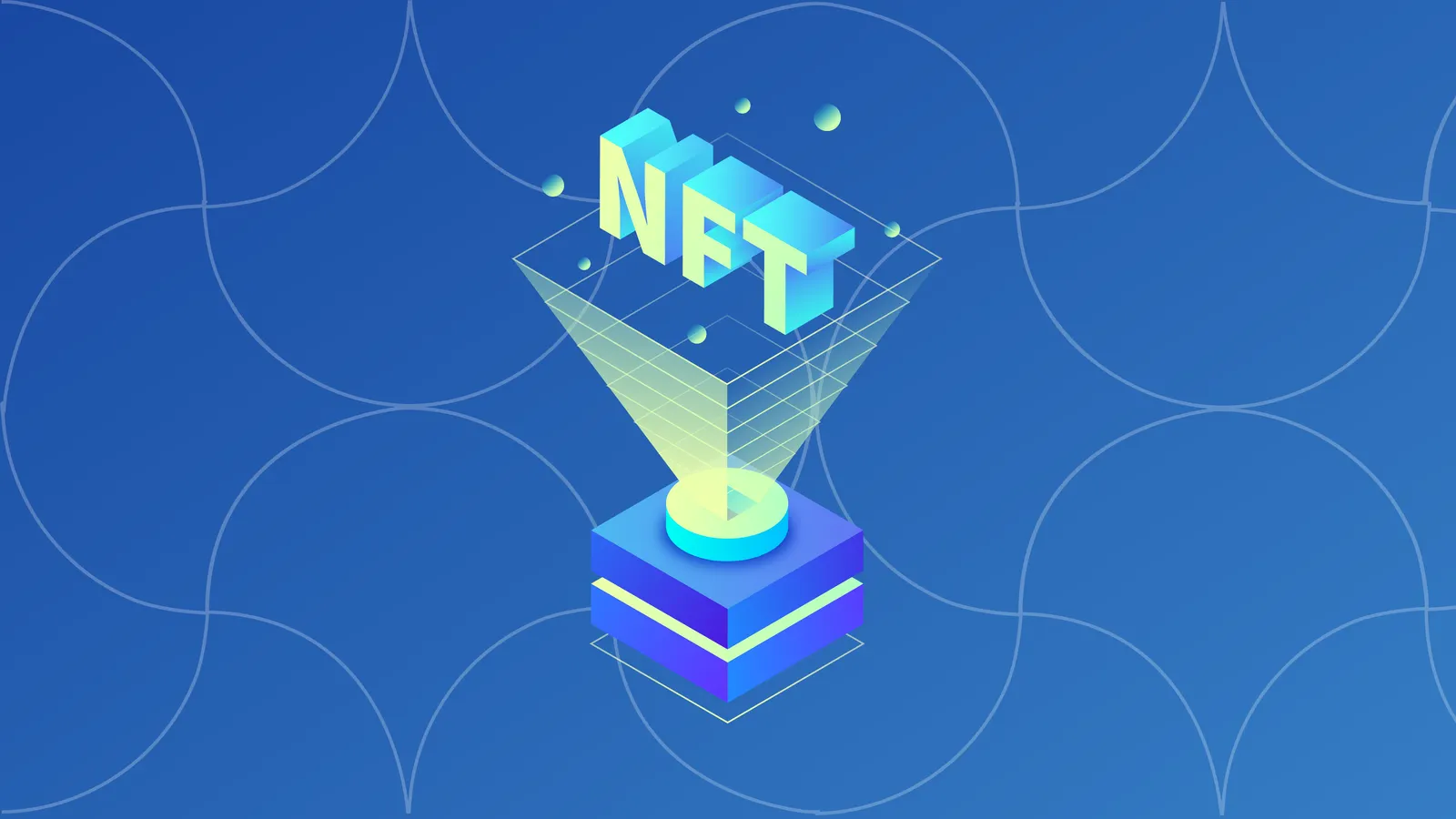In brief
- Non-fungible tokens (NFTs) are cryptographically unique tokens that are linked to digital (and sometimes physical) content, providing proof of ownership.
- They have many use cases, including artwork, digital collectibles, music, and items in video games.
Cryptocurrencies, utility tokens, security tokens, privacy tokens… digital assets and their classifications are multiplying and evolving right alongside cryptographic and blockchain technology.
Non-fungible tokens (NFTs) are one of the fastest-growing sectors in the crypto industry. In this guide, we explore what they are, how they work, and how they're being used.
What are non-fungible tokens?
Non-fungible tokens are digital assets that contain identifying information recorded in smart contracts.
It’s this information that makes each NFT unique, and as such, they cannot be directly replaced by another token. They cannot be swapped like for like, as no two NFTs are alike. Banknotes, in contrast, can be simply exchanged one for another; if they hold the same value, there is no difference to the holder between, say, one dollar bill and another.
Bitcoin is a fungible token. You can send someone one Bitcoin and they can send one back, and you still have one Bitcoin. (Of course, the value of Bitcoin might change during the time of exchange.) You can also send or receive smaller amounts of one Bitcoin, measured in satoshis (think of satoshis as cents of a Bitcoin), since fungible tokens are divisible.
Typically, non-fungible tokens are not divisible, in the same way that you cannot send someone part of a concert ticket; part of a concert ticket wouldn’t be worth anything on its own and would not be redeemable. However, in recent months some investors have experimented with the concept of fractionalized NFTs, though they remain a legal grey area and could be seen as securities.
CryptoKitties collectibles were some of the first non-fungible tokens. Each blockchain-based digital kitten is unique; if you send someone a CryptoKitty and receive a CryptoKitty from someone else, the one you receive will be a completely different CryptoKitty from the one you sent. Collecting different digital kittens is the point of the game.
The unique information of a non-fungible token, like a CryptoKitty, is stored in its smart contract and immutably recorded on that token’s blockchain. CryptoKitties were originally launched as ERC-721 tokens on the Ethereum blockchain, but subsequently migrated to their own blockchain, Flow, to be easier for crypto newcomers to access.
What makes NFTs so special?
Non-fungible tokens have unique attributes; they are usually linked to a specific asset. They can be used to prove the ownership of digital items like game skins right through to the ownership of physical assets.
Other tokens are fungible, in the same way as coins or banknotes. Fungible tokens are identical, they have the same attributes and value when exchanged.
Did you know?
In March 2021, digital artist Beeple sold an NFT collage of his work for $69 million, making him the third most expensive living artist at auction, after David Hockney and Jeff Koons.
How are non-fungible tokens used?
As well as representing digital collectibles like CryptoKitties, NBA Top Shot and Sorare, non-fungible tokens can be used for digital assets that need to be differentiated from each other in order to prove their value, or scarcity. They can represent everything from virtual land parcels to artworks, to ownership licenses.
They're bought and sold on NFT marketplaces. While dedicated marketplaces such as OpenSea and Rarible have hitherto dominated the field, recently some of the leading cryptocurrency exchanges have begun to muscle in on the space. In June 2021, crypto exchange Binance launched its own NFT marketplace, while rival Coinbase announced its own plans for a NFT marketplace in October 2021, with over 1.4 million users signing up for the waitlist in the first 48 hours.
How do NFTs work?
Tokens like Bitcoin and Ethereum-based ERC-20 tokens are fungible. Ethereum’s non-fungible token standard, as used by platforms such as CryptoKitties and Decentraland, is ERC-721.
Non-fungible tokens can also be created on other smart-contract-enabled blockchains with non-fungible token tools and support. Though Ethereum was the first to be widely used, the ecosystem has expanded, with blockchains including Solana, NEO, Tezos, EOS, Flow, Secret Network, and TRON supporting NFTs.
Non-fungible tokens and their smart contracts allow for detailed attributes to be added, like the identity of the owner, rich metadata, or secure file links. The potential of non-fungible tokens to immutably prove digital ownership is an important progression for an increasingly digital world. They could see blockchain’s promise of trustless security applied to the ownership or exchange of almost any asset.
As is the challenge of blockchain to date, non-fungible tokens, their protocols and smart contract technology is still being developed. Creating decentralized applications and platforms for the management and creation of non-fungible tokens is still relatively complicated. There is also the challenge of creating a standard. Blockchain development is fragmented, many developers are working on their own projects. To be successful there may need to be unified protocols and interoperability.
The future of NFTs
The first wave of NFTs focused on digital collectibles such as CryptoKitties and profile picture (PFP) collections such as CryptoPunks and Bored Ape Yacht Club.
2021 saw explosive growth in the NFT space, with trading volumes soaring as NFTs began to trade hands for eye-watering sums. In March 2021, digital artist Beeple sold a single NFT artwork for $69.3 million at auction, propelling him into the ranks of the top-selling living artists overnight. CryptoPunks, Bored Apes and Art Blocks traded hands for millions of dollars. Scenting a new market, venerable institutions such as auction houses Christie's and Sotheby's have embraced NFTs, hosting sales and (in the latter's case) launching its own NFT platform. Art galleries wrestled with the thorny question of how to display digital artwork.
Big money was accompanied by ever-bigger names, as artists and celebrities rode the wave of enthusiasm for NFTs.
Following the 2022 crypto crash, NFT sales plunged alongside the wider crypto market, with NFT floor prices and trading activity continuing to stagnate through 2023. But even as the market slumped, innovation within the space has continued.
NFTs have been used to represent a wide variety of digital and physical content, including items in video games, music, films, event tickets and more.
In September 2021, thriller film Zero Contact became the first feature-length movie to be released as an NFT; weeks later, pandemic-themed thriller Lockdown followed suit. In October, Tom Brady's NFT platform Autograph launched a music vertical, with The Weeknd as its first signing.
For gaming, non-fungible tokens could be used to represent in-game items like skins, potentially allowing them to be ported to new games or traded with other players.
Video game companies have seized on the possibilities of NFTs, with Assassin's Creed publisher Ubisoft becoming the first major gaming company to launch in-game NFTs in late 2021. Other game companies including Konami have experimented with NFTs, but many gamers remain skeptical of the technology; in December 2021, developer GSC Game World abandoned plans to include in-game NFTs in its game S.T.A.L.K.E.R. 2: Heart of Chernobyl, following a widespread backlash among fans.
NFTs are also expected to become a key component of the metaverse, a persistent, shared virtual world where users can interact as 3D avatars. Companies such as Meta (formerly Facebook), Adidas, Nike and Samsung have all ventured into the metaverse, and more brands are expected to follow suit.
Metaverse platforms such as The Sandbox already make use of NFTs to represent plots of virtual land and in-game items such as clothing for avatars. The next step towards a single, persistent metaverse will likely make use of NFTs' interoperability, enabling users to move virtual items between different metaverse platforms.
Non-fungible tokens add potential to the creation of security tokens and the tokenization of both digital and real-world assets. Physical assets like property could be tokenized for fractional, or shared, ownership. If these security tokens are non-fungible, ownership over the asset is completely traceable and clear, even if only tokens representing part ownership are sold.
Further application of non-fungible tokens could include certification for qualifications, software licensing, warranties, and even birth and death certificates. The smart contract of a non-fungible token immutably proves the identity of the recipient or owner and could be stored in a digital wallet for ease of access and representation. One day, our digital wallets could contain proof of every certificate, license, and asset, we own.


